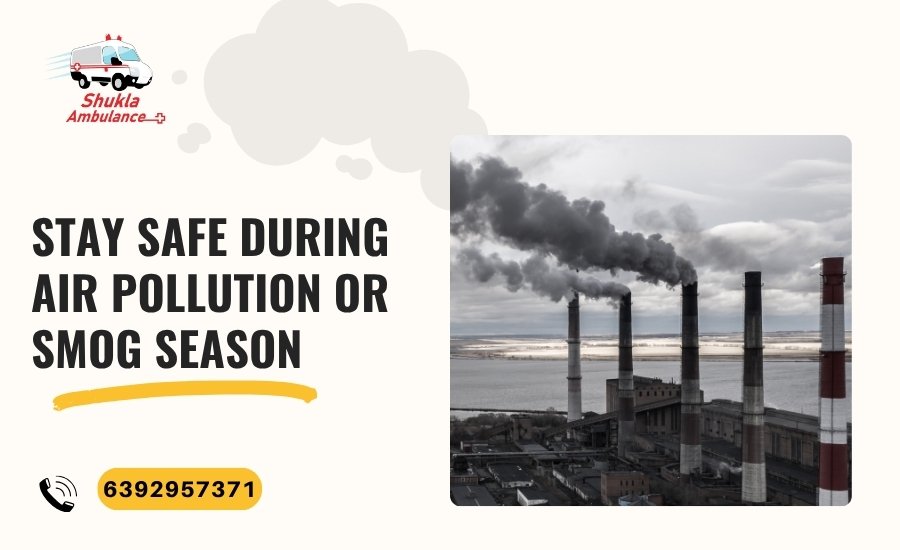


By Shukla Ambulance
Environmental degradation and pollution are among the biggest challenges the world faces today. They affect not only nature but also human health, the economy, and future generations. Understanding the relationship between environmental degradation and pollution helps us find better ways to protect our planet.
Environmental degradation means the destruction or deterioration of the environment through the depletion of natural resources like water, air, and soil. On the other hand, pollution is the process of introducing harmful substances into the environment—air, water, or land—which causes damage to living beings and ecosystems.
In simple terms, pollution is one of the main causes of environmental degradation. When we pollute, we destroy the quality of the environment.
You can also find more about this topic in environmental degradation and pollution PDF, PPT, or Wikipedia for educational use.
The link between environmental degradation and pollution is one of directness and strength.
• Pollution is the primary causative factor for degradation: The ozone layer is negatively impacted by air pollution, which eventually leads to global warming. Water that is polluted not only kills the fish but also renders little of it safe for human use.
• Degradation, on the other hand, enhances the effects of pollution: Cutting down trees (deforestation) leads to soil erosion, which increases the amount of dust in the air, contributing to air pollution.
To sum it up, pollution is the root cause of environmental degradation while the latter helps the former to spread intolerably — a vicious circle then is established.
There are many causes of environmental degradation and pollution, including:
These points are also useful for students searching for environmental degradation and pollution notes or environmental degradation and pollution essay.
India's environment is seriously threatened by air pollution, deforestation, and water contamination among other factors.
• The capital Delhi and some other large cities frequently rank as the world's most polluted.
• Water bodies such as Ganges and Yamuna are contaminated with garbage and chemicals from factories.
• Cities are invading the forests thus the latter are becoming less and less.
Getting acquainted with the environmental degradation and pollution scenario in India is the first step towards educating the public and enacting strict environmental laws.
Indian environmental law includes several acts to reduce degradation:
• The Environment (Protection) Act, 1986
• The Air (Prevention and Control of Pollution) Act, 1981
• The Water (Prevention and Control of Pollution) Act, 1974
These laws help control industrial waste and promote cleaner technologies.
New research indicates that climate heating, environmental deterioration, and pollution are interlinked. Not only does global warming lead to glacier melting but at the same time bacterial resistance to antibiotics is raised through water bodies that are both polluted and hot. The issue becomes a major public health risk — it is an aspect that even medical services such as Shukla Ambulance have to take into account during pollution-induced emergencies.
|
Aspect |
Environmental Degradation |
Pollution |
|
Meaning |
Damage or decline in the environment’s quality and resources |
Introduction of harmful substances into the environment |
|
Scope |
Broader (includes deforestation, soil erosion, etc.) |
Narrower (focuses on air, water, soil contamination) |
|
Cause |
Can be natural or human-made |
Mostly human-made |
|
Example |
Deforestation, desertification |
Air and water pollution |
This difference between environmental degradation and pollution is often discussed in class 10 notes, PDF, or PPT presentations.
Mitigation of environmental degradation and pollution needs to be done at two levels, that of the individual and that of the government, and there are a number of steps to take to implement such a strategy:
1. More trees should be planted – Reforestation is one of the activities that lead to restoring balance.
2. Use transport that is eco-friendly – Bicycles and electric vehicles should be encouraged.
3. Waste management – Waste should be segregated properly and recycled.
4. Plastic use should be reduced – Single-use plastics should be avoided.
5. Green energy sources should be supported – Solar, wind, and other renewable sources should be used.
6. Awareness should be raised – Others should be taught how important a clean environment is.
These steps to mitigate environmental degradation and pollution activities in class 10, can also be mentioned in school essays and poster making competitions especially in Punjab or any other Indian state.
As a trusted emergency ambulance service, Shukla Ambulance understands that a healthy environment means healthier lives. Pollution increases respiratory and heart problems, leading to more emergencies. By spreading awareness and supporting eco-friendly practices, we aim to protect both human life and the environment.
To explain environmental degradation and pollution simply: it’s a result of human activities that damage nature and endanger all living beings. Understanding, discussing, and taking action are vital steps to save our planet. Together, we can build a cleaner, safer, and sustainable future.




